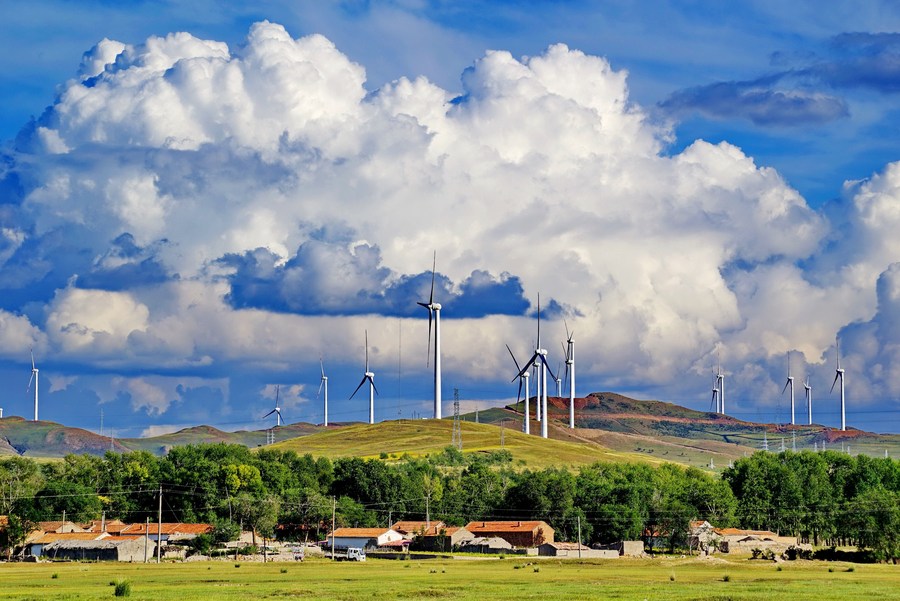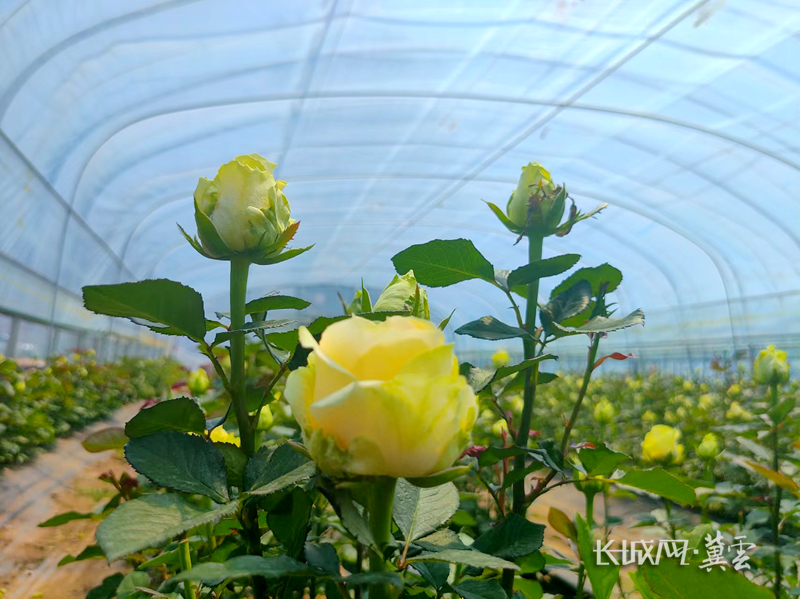
The file photo shows a wind power plant in Zhangjiakou, North China's Hebei province. [Photo/Xinhua]
China managed to keep good momentum for steady improvements in its environmental quality in 2023 amid unfavorable economic and meteorological conditions for air pollution control, according to a report being deliberated by the country's top legislature.
The report on China's environmental progress in 2023 was submitted to an ongoing session of the Standing Committee of the National People's Congress for review on Tuesday.
The long-term improvement trend of the country's air quality was maintained last year, despite the significant increases in the emissions of air pollutants because of the rapid recovery of economic activities after the COVID-19 epidemic.
The average concentration of PM2.5 particulate matter in prefecture-level cities and above across the country reached 30 micrograms per cubic meter last year, up by 1 mcg/cm year-on-year, but 1 mcg/cm lower than the average density from 2020 to 2022, from which emissions went down to comparatively low levels because of the epidemic.
If compared with 2019, it decreased by 16.7 percent, it added.
The report noted El Nino, a periodic event that involves warming currents in the Pacific Ocean, as another major factor that made air pollution control work in 2023 challenging.
Because of the weather phenomenon, China was raged by more sandy and dusty weather events with stronger intensity than usual in spring last year, it said.
It said the country also registered continuous improvement in the water environment in 2023.
Last year, 89.4 percent of monitoring sections for surface water across the country registered fairly good quality, up by 1.5 percentage points from 2022, it said.
China has a five-tier quality system for surface water, with Grade I being the best. The quality can be considered fairly good if it reaches Grade III.
Editor: Zheng Bai, Mi Wenting (Intern)






